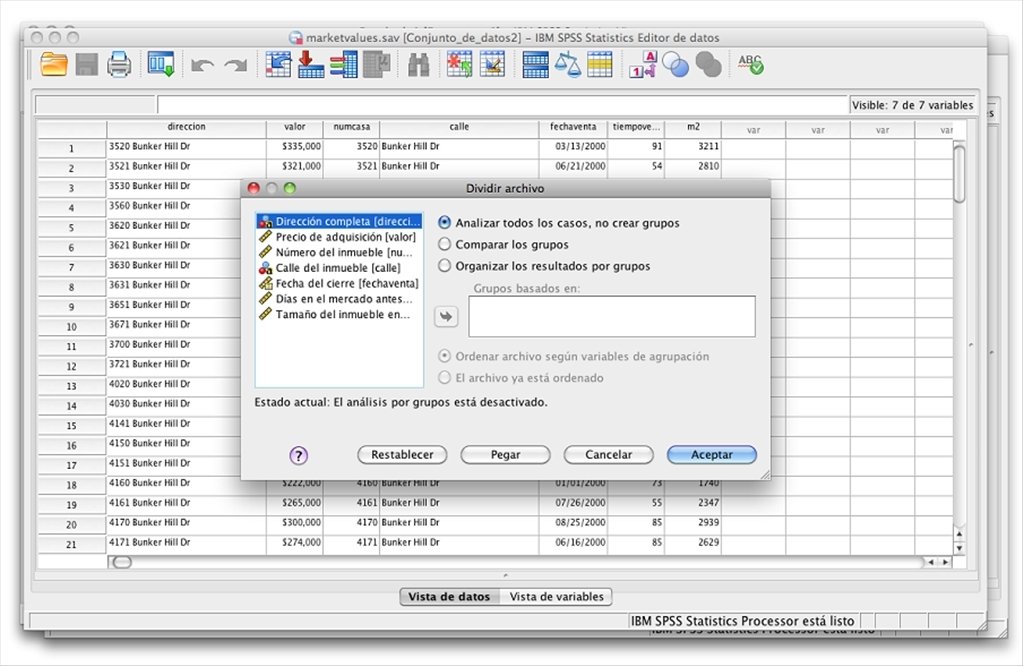

Translating from one data format to another is always tricky and time consuming. Is the effort of learning the plug-in worth the gain in productivity? Is there a gain in productivity, or are the advantages of a different sort? To these questions, I would answer Yes and Yes. Tedious data manipulation notwithstanding, you can certainly work both applications without a plug-in to connect them. If you need to return data from R back to SPSS, the return journey is more awkward. This method usually works, in the sense that only a few dozen lines of R code are then required to cope with categories, missing values, time variables, and other features that are either lost or damaged in translation.
#Ibm spss 20 portable#
A cleaner way is to save to SPSS Statistics Portable (POR) format from SPSS and open the result by using the read.spss() method from the foreign library. sav format typically opens the file in SPSS, saves it to comma-separated values (CSV) format, and opens the result in R by using the read.csv() method. The low level of interest is not surprising: SPSS users are, more often than not, people who use only SPSS for their data analysis and R users are accustomed to applying ugly hacks as part of doing business with R. It’s something of a well-kept secret, judging from the low level of activity in the R blogosphere on this point. NOTE: ITS suggests you open IBM SPSS Statistics once the installation has finished to ensure that the software has installed correctly.IBM® SPSS® can talk to R.

Click Next to continue with the license process. The License Status screen will appear.NOTE: You must be connected to the Internet to successfully complete the authorization process. Click License Product to begin your authorization. When you launch IBM SPSS Statistics for the first time, you will see the following screen and be asked to authorize your copy of SPSS.Once the installation has completed, click Finish on the InstallShield Wizard to end the installation process and launch IBM SPSS Statistics.This process takes approximately 2-5 minutes.
#Ibm spss 20 install#
On the Ready to Install the Program screen, click Install.On the Destination Folder screen, click Next to install the software to its default location.Choose I accept the terms in the license agreement and then click Next. A second license agreement will appear.Select I accept the terms in the license agreement and then click Next to continue with the installation. The following license agreement screen will appear.On the IBM SPSS Statistics – Essentials for Python screen, under Install IBM SPSS Statistics – Essentials for Python, select Yes and then click Next.
#Ibm spss 20 software license#
#Ibm spss 20 how to#
This page provides instructions on how to install IBM SPSS Statistics on a computer running Windows 7, Windows 8 (8.1), or Windows 10.


 0 kommentar(er)
0 kommentar(er)
